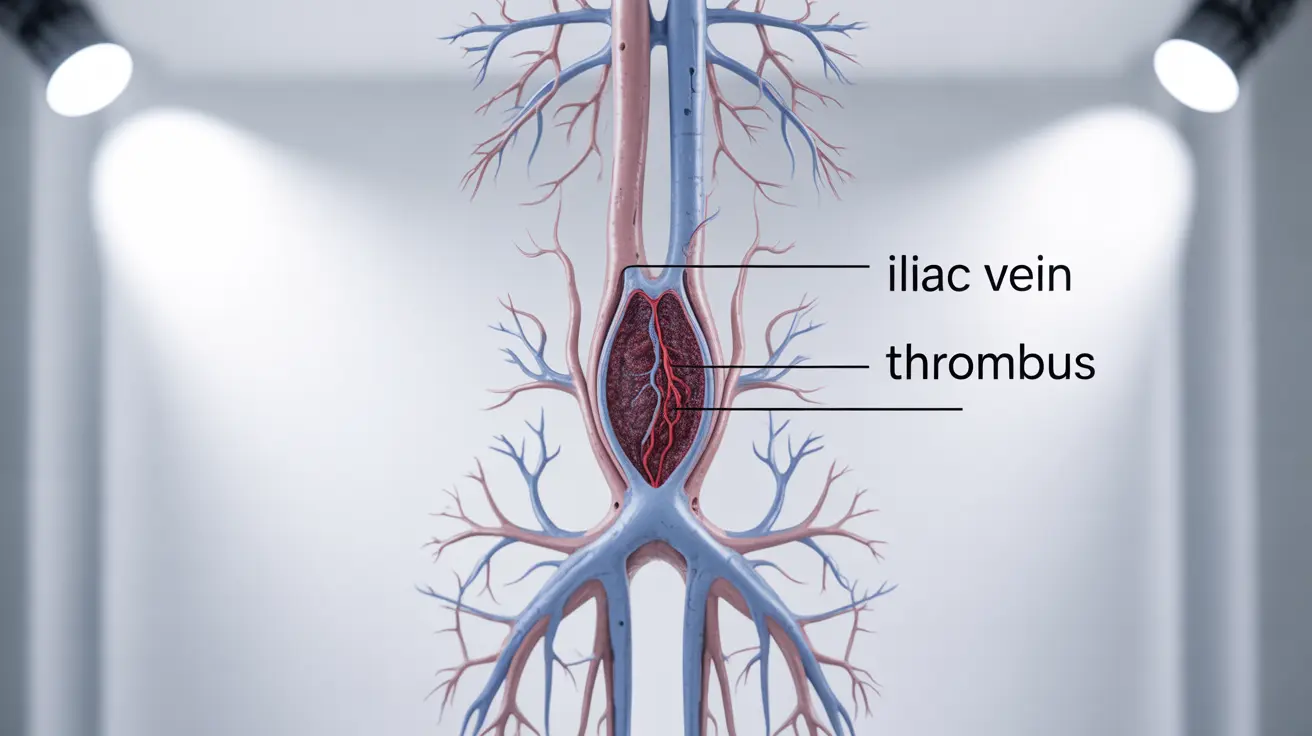Iliac vein thrombosis is a serious medical condition that occurs when a blood clot forms in one of the large veins in the pelvic region. This condition requires prompt medical attention as it can lead to potentially severe complications if left untreated. Understanding the signs, symptoms, and treatment options is crucial for anyone at risk or experiencing symptoms.
This comprehensive guide will explore the essential aspects of iliac vein thrombosis, including its symptoms, diagnostic procedures, treatment approaches, and prevention strategies. We'll also discuss when to seek immediate medical attention and what lifestyle changes can help reduce your risk.
Key Symptoms and Warning Signs
Recognizing the symptoms of iliac vein thrombosis early is crucial for successful treatment. Common signs include:
- Swelling in one leg, particularly the thigh or entire leg
- Pain or tenderness in the affected leg
- Skin that feels warm to the touch
- Redness or discoloration of the skin
- Visible surface veins
- Pain that worsens when standing or walking
These symptoms may develop gradually or appear suddenly, and their severity can vary among individuals. It's important to note that some people might experience only mild symptoms initially.
Diagnostic Procedures and Testing
When iliac vein thrombosis is suspected, healthcare providers typically use several diagnostic tools to confirm the condition:
Imaging Tests
- Duplex ultrasound
- CT venography
- MR venography
- Contrast venography
These imaging techniques help doctors visualize the blood clot and determine its exact location and extent, which is crucial for planning appropriate treatment.
Treatment Approaches
Treatment for iliac vein thrombosis typically involves several strategies working together:
Immediate Interventions
- Anticoagulation therapy (blood thinners)
- Compression stockings
- Activity modification
- Possible catheter-directed thrombolysis
Long-term Management
- Continued anticoagulation
- Regular monitoring
- Lifestyle modifications
- Prevention of future clots
Prevention Strategies
Several preventive measures can help reduce the risk of developing iliac vein thrombosis:
- Regular physical activity
- Maintaining a healthy weight
- Staying hydrated
- Taking breaks during long periods of sitting
- Following prescribed medication regimens
- Wearing compression stockings when recommended
Complications and Their Prevention
Understanding potential complications is crucial for proper management:
- Post-thrombotic syndrome
- Pulmonary embolism
- Chronic venous insufficiency
- Recurrent thrombosis
Early intervention and proper adherence to treatment plans can significantly reduce the risk of these complications.
Frequently Asked Questions
What are the main symptoms of iliac vein thrombosis, and when should I see a doctor?
The main symptoms include leg swelling, pain, warmth, and skin discoloration. See a doctor immediately if you experience sudden leg swelling, severe pain, or difficulty breathing, as these could indicate a serious condition requiring immediate medical attention.
How is iliac vein thrombosis diagnosed, and what imaging tests are most accurate?
Diagnosis typically involves a combination of physical examination and imaging tests. Duplex ultrasound is often the first-line imaging test, but CT venography and MR venography may provide more detailed images. Contrast venography is considered the gold standard but is more invasive.
What treatment options are available for iliac vein thrombosis, and how long do they last?
Treatment typically involves blood thinners (anticoagulants), which may be needed for 3-6 months or longer. Some cases might require catheter-directed thrombolysis or mechanical thrombectomy. The duration of treatment depends on individual factors and risk assessment.
What lifestyle changes or steps can I take to lower my risk of developing iliac vein thrombosis?
Key preventive measures include maintaining regular physical activity, staying hydrated, avoiding prolonged periods of immobility, maintaining a healthy weight, and following medical advice regarding compression stockings or medications if prescribed.
Are there any serious complications from iliac vein thrombosis, and how can they be prevented?
Serious complications can include pulmonary embolism and post-thrombotic syndrome. Prevention involves early treatment, proper adherence to prescribed medications, regular medical follow-up, and lifestyle modifications. Immediate medical attention for symptoms can help prevent severe complications.




